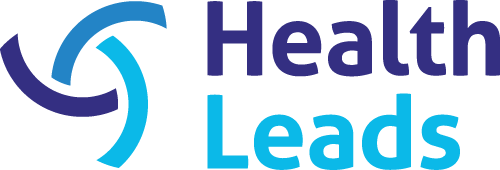Increasing Access to Key Benefits for Families: An Argument for State-level Data Matching

Maris Gelman, MPH, Program Manager, New York
Adrianna Saada, MPH, Director of Quality Improvement
Across our work at the intersection of healthcare, public health and community, we’ve seen an increasing appetite at both the state and national levels to increase data matching efforts to help close enrollment gaps within benefits programs. Data matching is the process of comparing two different data sets to identify matches and reduce duplicate information. This proven method increases enrollment in public benefits among eligible communities.
In 2021, our team set out to test the efficacy of provider-level data matching on the Special Supplemental Nutrition Program for Women, Infants, and Children (WIC) and SNAP enrollment at two pilot sites in Brooklyn, New York and discovered that while enrollment increased with provider-level data matching – it is not a sustainable method to identify eligible New Yorkers. Based on insights from this pilot, we explain why state-level data matching can help identify qualified birthing people and make it easier to enroll them, making this the preferred approach to expanding enrollment across New York.
Silos across benefits and maternal health providers persist as national estimates show nearly half of eligible individuals are missing out on WIC, a critical benefit that supports maternal and infant health. (1,2,3) In New York State WIC enrollment increased by 6.2% from March 2022 to March 2023. (4) However, enrollment gaps remain, and in some New York communities the enrollment gap is as high as 49% of eligible pregnant and postpartum people. Despite the enrollment gaps, WIC, SNAP and Medicaid have been identified by patients as desirable resources, and extensive research suggests that participating in these programs improves maternal and infant health outcomes. (5)
OUR PROCESS: TESTING TEXT MESSAGING OUTREACH TO WIC-ELIGIBLE PATIENTS
Through a co-design process with 30 New York City based healthcare professionals and community stakeholders, our team identified proactive text message outreach as an appealing and low-effort method for connecting with eligible New Yorkers who were not receiving WIC and SNAP benefits. Health Leads partnered with two Brooklyn-based pilot sites – NYC Health + Hospitals (H+H) Kings County Hospital, and the Brownsville Multi-Service Family Health Center (BMS) to determine whether this solution would lead to the desired result of connecting to WIC benefits. We hypothesized that if we proactively identify and outreach to eligible prenatal patients, we could create a more efficient and effective process for accessing WIC benefits. Additionally, our teams created a protocol to target WIC-eligible patients via data matching that would streamline the outreach and enrollment process while also decreasing staff workload. To test this hypothesis, the team implemented Plan-Do-Study-Act (PDSA) cycles – a method for testing changes on a small scale to see how well they work.
Our findings from two pilot sites determined that data matching at the local level has the potential to increase access to WIC benefits. However, without an automated system, it is too burdensome and unsustainable to implement at the provider level. At BMS, identifying eligible clients involved five staff members across three departments and nearly 14 steps in a workflow – reinforcing how most clinical and hospital settings lack the staffing, resources and medical reporting systems to standardize data matching.
NATIONAL AND STATEWIDE POLICY AND INNOVATION
Closing enrollment gaps in public benefit programs is critical and in response, state and federal agencies, organizations and associations are taking innovative measures. In order for state-level data matching to work, WIC agencies should be resourced to participate and collaborate with health care delivery systems. Agencies must commit to sharing data for cross-referencing enrollment gaps. To support this effort, New York State Senator Kevin Parker introduced Bill S4548 that establishes automated identification of eligible participants for public benefits programs ranging from SNAP to Child Health Plus.
In addition, focusing on innovation and integration of technology can streamline data matching and create more access for potential enrollees. Code for America, in partnership with New York State Department of Health, is piloting integrating live-chat technology to gather feedback on WIC enrollees experience. (6) The National WIC Association recommends investment in technology infrastructure, including text messaging features and streamlining access to electronic health information sharing between WIC providers and physicians. (7)
REALIZING THE POTENTIAL OF DATA MATCHING
Based on our learnings from our pilot, we recommend automated data matching at the state level as a viable and sustainable method to identify enrollment for pregnant and postpartum New Yorkers who qualify for WIC and SNAP benefits. Targeted, proactive outreach at the provider level is not sustainable due to the increased staff workload.
State and national trends point to an increasing interest in state level data matching to address underutilization of public benefits. Through this approach, individuals will have increased access to the wide range of benefits and community resources to support their maternal and infant health. With continued investment in resources, innovative technology and legislative support, New York – and other states – can make a real difference in closing our enrollment gaps among eligible birthing and postpartum people.
- Davis, R.A., Leavitt, H.B. & Chau, M. A Review of Interventions to Increase WIC Enrollment and Participation. J Community Health (2022). https://doi.org/10.1007/s10900-022-01131-2
- Scaffidi, S.S., Gilman, M., & Myers, N. (n.d.). Improving nutrition and infant health through WIC: Opportunities during and beyond a public health crisis. United Hospital Fund. https://uhfnyc.org/publications/publication/wic-and-medicaid/
- https://www.fns.usda.gov/wic/eligibility-and-program-reach-estimates-2020
- https://fns-prod.azureedge.us/sites/default/files/resource-files/27wilatest-6.pdf
- https://www.cbpp.org/research/food-assistance/wic-works-addressing-the-nutrition-and-health-needs-of-low-income-families
- https://codeforamerica.org/news/safety-net-innovation-lab-second-cohort-announcement/?utm_campaign=cfa-newsletter&utm_medium=email&_hsmi=252304450&_hsenc=p2ANqtz-_TJxn0Oy2apdanmjIQ4_153-t9bJJFWYzDtc7tFFxm7BbDdOBQ_2GHo7jeVXFbhgbtWVbCMTX0KDKQ2M_HffIgMIX0ZEb5FUKC-WlfCM1cdH8DVfM&utm_content=252304449&utm_source=hs_email
- https://media.nwica.org/2023%20wic%20tech%20report%204.5.23.pdf




